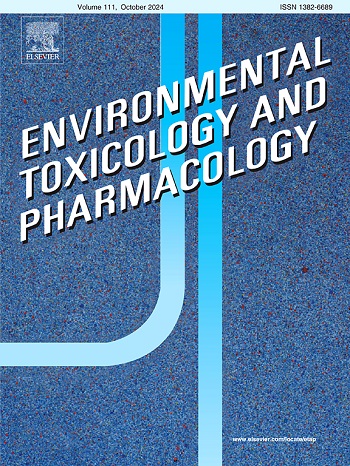Regeneration of zebrafish retina following toxic injury
IF 4.2
3区 环境科学与生态学
Q2 ENVIRONMENTAL SCIENCES
引用次数: 0
Abstract
The structure of the zebrafish retina appears to be very similar to that of mammals, that is why it is used as a model for studying the eye. Indeed, the zebrafish retina can regenerate itself through mechanisms of Müller cell reprogramming. In this research, adult zebrafish were exposed to aluminum to cause damage in the retina and thus evaluate the regenerative capacity of the damaged tissue. Histological and histochemical analyses assessed the retinal structure and the neurodegenerative process, respectively. An expression analysis of PARPs was carried out to verify whether a potential oxidative DNA damage happens. In addition, some genes involved in the regeneration process (pax6a, pax2a, ngn1, and notch1a) were analyzed. The data confirmed the toxicity of aluminum which caused retinal neurodegeneration, but also highlighted the ability of zebrafish to regenerate the retinal structure, repairing the damage and confirming its use as a good model for translational studies.
斑马鱼视网膜毒性损伤后的再生。
斑马鱼视网膜的结构与哺乳动物非常相似,因此被用作研究眼睛的模型。事实上,斑马鱼视网膜可以通过Müller细胞重编程机制实现自我再生。在这项研究中,成年斑马鱼暴露于铝中,导致视网膜受损,从而评估受损组织的再生能力。组织学和组织化学分析分别评估了视网膜结构和神经退行性过程。对 PARPs 的表达进行了分析,以验证是否发生了潜在的 DNA 氧化损伤。此外,还分析了一些参与再生过程的基因(pax6a、pax2a、ngn1 和 notch1a)。这些数据证实了铝的毒性会导致视网膜神经变性,但同时也强调了斑马鱼再生视网膜结构、修复损伤的能力,并证实其可作为转化研究的良好模型。
本文章由计算机程序翻译,如有差异,请以英文原文为准。
求助全文
约1分钟内获得全文
求助全文
来源期刊
CiteScore
7.00
自引率
4.70%
发文量
185
审稿时长
34 days
期刊介绍:
Environmental Toxicology and Pharmacology publishes the results of studies concerning toxic and pharmacological effects of (human and veterinary) drugs and of environmental contaminants in animals and man.
Areas of special interest are: molecular mechanisms of toxicity, biotransformation and toxicokinetics (including toxicokinetic modelling), molecular, biochemical and physiological mechanisms explaining differences in sensitivity between species and individuals, the characterisation of pathophysiological models and mechanisms involved in the development of effects and the identification of biological markers that can be used to study exposure and effects in man and animals.
In addition to full length papers, short communications, full-length reviews and mini-reviews, Environmental Toxicology and Pharmacology will publish in depth assessments of special problem areas. The latter publications may exceed the length of a full length paper three to fourfold. A basic requirement is that the assessments are made under the auspices of international groups of leading experts in the fields concerned. The information examined may either consist of data that were already published, or of new data that were obtained within the framework of collaborative research programmes. Provision is also made for the acceptance of minireviews on (classes of) compounds, toxicities or mechanisms, debating recent advances in rapidly developing fields that fall within the scope of the journal.

 求助内容:
求助内容: 应助结果提醒方式:
应助结果提醒方式:


